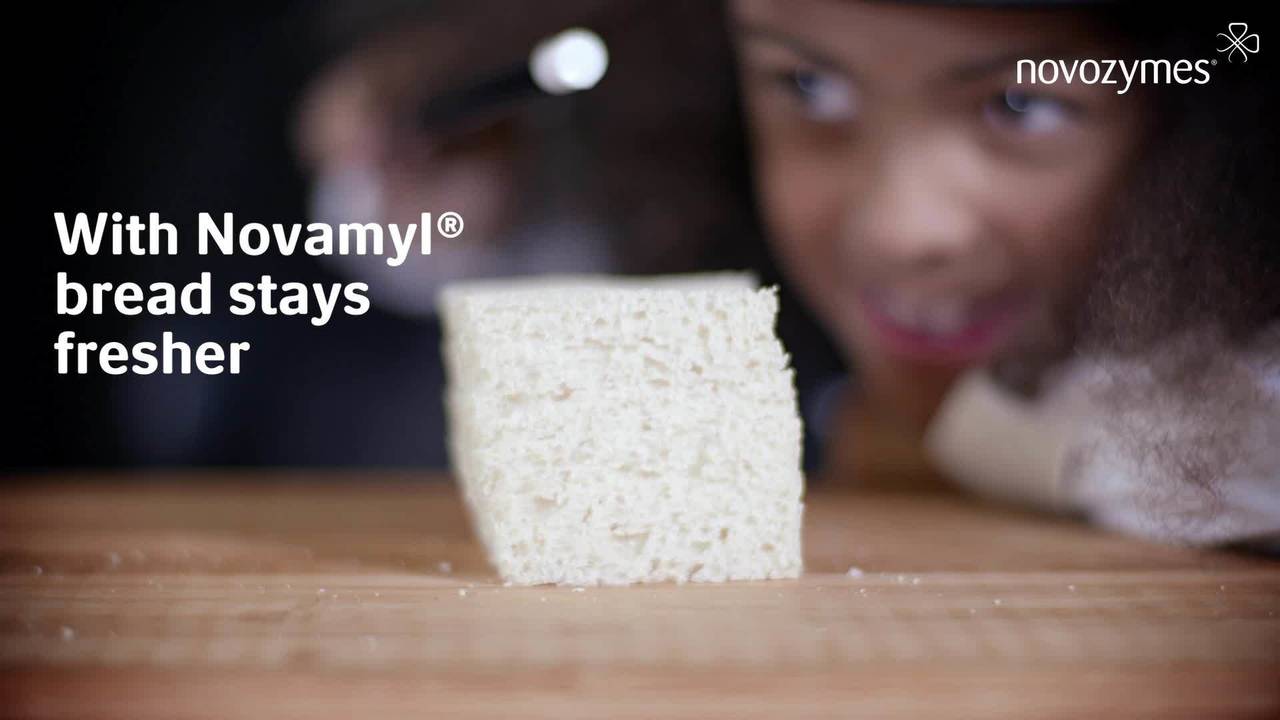Details
Changes in the starch structure of flour start to occur immediately after baking. These changes make bread and other baked goods lose their fresh eating quality. Novamyl® Boost modifies the starch structure to delay these changes. It gives your baked goods the highest softness and resilience/elasticity over time. It also improves foldability in toast, sandwich, and similar breads. The result is a delicious eating quality at every point through the shelf-life of your bread, buns and rolls. That leads to a considerable reduction in food waste and in stale returns.
How maltogenic alpha-amylases help keep bread fresh during shelf life
Maltogenic alpha-amylases modify amylopectin molecules in starch flour to slow down the recrystallization process. This process is thought to be one of the main causes of staling. Maltogenic α-amylases keep amylopectin molecules’ primary structure intact. That means starch granules stay resilient and baked goods stay fresher for longer.
There are two causes of bread staling. Both are linked to starch in flour, especially to the amylopectin molecules found in starch.
The main cause is recrystallization, a process that starts soon after baking. As starch granules move from a gelatinous to rigid state, they lose their flexibility. This makes the bread crumb hard dry and brittle. The second possible cause is the increase in starch-gluten complexes. Both these processes happen as bread ages.
Starch in flour consists of the polysaccharides amylopectin and amylose. Maltogenic α-amylases modify amylopectin molecules. They target the ends of the molecules, generating small sugar molecules. These are mainly maltose, along with some oligosaccharides and small dextrins.
Importantly, maltogenic α-amylases leave the amylopectin molecule’s primary structure intact. The result is starch granules that stay softer and more resilient for longer. That allows baked goods to keep their soft, moist, elastic texture for longer.
